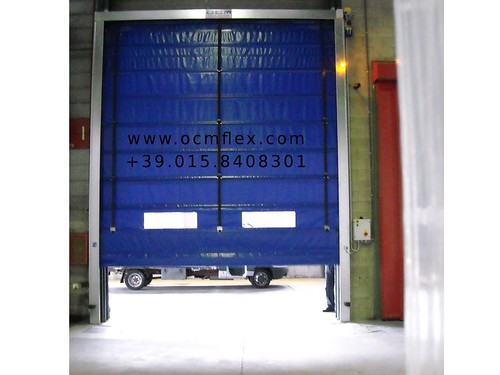
Image : http://www.flickr.com
SAP is the short form of systems, applications and products. SAP is not only the name of one of the largest companies in the world of software development, but also the name of the software product developed by this company. SAP AG, the canonical name of the company since it was founded in Germany, originally from customers with a tool with which they deem necessary to interact with a single master database for each application across the organization.
The idea of the instrumentwas practically in the form of financial records called SAP R / 1, the first version of the legendary software company SAP. The improved version of this application, SAP R / 2 was at the end of 1970, the mainframe-based business application software is started. Later, SAP AG has launched a new version of client-server software called SAP R / 3, after the advent of distributed client-server computing.
SAP R / 3 functionality:
SAP applications, built around their latestR / 3 enables R / 3 to full operation and management tasks to deal with the organization. Ie, SAP R / 3 provides users with tools for financial, asset and cost accounting, manufacturing and materials, personnel, equipment, and manage archived documents. It works on Advance Business Application Programming (ABAP), which is fourth-generation programming language. The R / 3 system is compatible with multiple platforms, including Windows 2000 and uses the client / serverModel.
SAP R / 3 modules:
SAP R / 3 consists of several functional software modules. These modules combine to carry out all operational activities and management of an organization. Each individual function module handles specific tasks on their own, but the others are, as applicable. The forms most commonly used are - logistics, accounting and personnel management.
Logistics Module:
Logistics is the method to remove from the startVersions on request, for example, the supply of a product to its desired location upon request. The various tasks involved in this distribution, production planning, materials management, maintenance and quality management, and other things like that, the logistics module are integrated in all those below. The various components of this module and example of their functions are:
Logistics Module
Distribution of modules: pre-sales support, inquiry processing customerOffer processing, order processing, delivery processing, billing and information system for sale.
Material Management Module: the purchasing, warehouse management, inventory, billing, etc.
Production Planning module: planning and organization of the production process of transport and storage of raw materials, products and waste, etc.
Maintenance module: the repair of buildings, maintenance of equipment used in production, machine informationUse and possible downtime, etc.
form of quality management: all the processes related to product quality.
Accounting modules:
This module performs all financial assets and accounts or, in other words, this module meets all financial and accounting organization. E 'to provide automated management and reporting of Ledger, credits and payments, etc., which in turn allows the balance sheet and profit and loss (P & L) an offer for grantedupdated continuously. Thus, the key advantage of this form that the book reflects the real situation. The various components of this module are:
Sample Accounting Module
Accounting: accounting functions, such as financial statements, profit and loss accounting rules, etc.
Control: Control costs and objectives of the company, provides information for decision making and future planning.
EnterpriseControl: the integration of internal information to bring to market issues in data marketing strategies.
Treasury: corporate banking, cash management, financial management, etc.
Capital Investment Management Fund supports organizations in their investment and monitoring.
Project System: Project Management I, budgeting, project management / integration, information systems, operational structures, project planning, etc.
Human Resources Forms
As the words themselvesdefined, provides HR forms a complete system of human resource management, even in areas such as staff planning and recruitment, human resources and payroll accounting, payroll and human resource development.
First, the implementation of SAP and training were organized along lines form. For example, in a course on the logistics, you should know a lot of things on SD and SD-MD, SD-GF, SD-SLS, etc., but not much on the rest of the SAP system, such as SD and how it fits. Thus, theThe integration between the modules was completely absent. This used in this result, the solutions are optimized along the modules, but lacked integration. In order to achieve the integration, the programs are now organized along process lines such as:
· Orders to Cash (including parts of SD, FI-AR and probably TY as well)
· Purchasing of pay (including MM-Purchasing and FI-AP)
Per ° Record Report (FI-GL, etc.)
Instead of the adjustment process linesThe modules for SAP solutions are now moving away from describing their system as a series of modules, and are now called "solutions". The New Dimension products can be integrated independently or with the R / 3. Its advantages are to avoid duplication, gaps and data redundancy and increase the return on investment of IT implementations made. It provides high quality information to society as a whole, faster and cheaper, which in turn provide high quality information designed toproduce a quality company. These solutions are:
· Financial
· Human Resources
Customer · Relationship Management
· Supplier Relationship Management
• Product Lifecycle Management
· Power Supply Chain Management
· Business Intelligence
Conclusion:
SAP is a business solution across the enterprise. This means that organizations that effectively integrate SAP all their activities, includingFinance, purchasing, selling permits, human resources, etc. This integration of all business transactions of an organization on the Internet to all areas of the organization and there is no duplication of data in separate systems.
ไม่มีความคิดเห็น:
แสดงความคิดเห็น